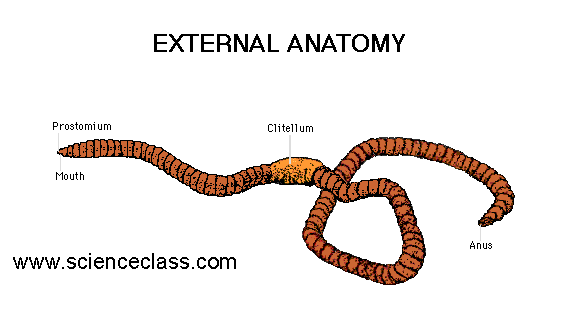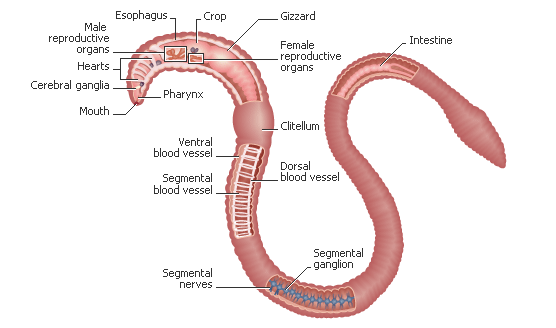Earthworms

Earthworms
help the environment


- Earthworms help aerate the soil by digging tunnels which help plants and trees get their nutrients, air and water easier.
- After earthworms eat they produce waste called castings, which is rich in nutrients providing food for animals and microorganisms.
- Microorganisms help break down the earthworms waste for plants to use.

Life Cycle of the
Earthworm
- Earthworms have both male and female reproductive organs, but two worms are needed for reproduction to occur.
- When earthworms mate, a ring forms around the front of the earthworm's body.
- This ring is called a clitellum which slides down the worm's body to pick up any fertilized eggs.
- The clitellum falls off the worm to form a nest or egg case that is deposited into the soil where the fertilized eggs become embyos.
- The embyos (baby worms) grow and develop inside the clitellum.
Fun
Facts About the Earthworm
|
 |
To Learn Even More About Earthworms Click Here